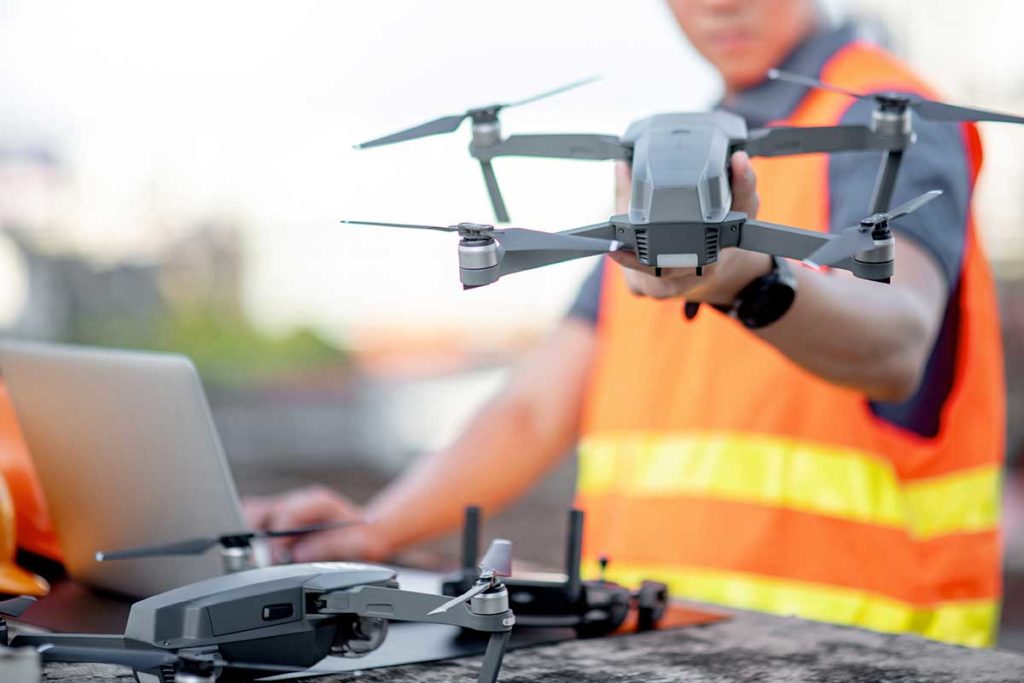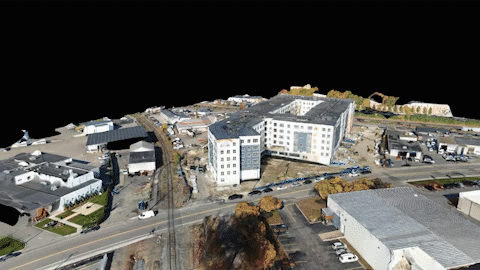Part Four:
How to use Drones in Modern Litigation

01. 3D Modeling from Drone Footage

02. Post-Processing Footage
Various stages of the 3D modeling process for litigation
Cogent Legal can create lifelike 3D models of any object or scene
03. Benefits during a global pandemic
Note the high degree of realism, lighting, shading, and depth that can be produced using this method, and consider the potential benefits of capturing such detailed reproductions early on in your cases’ developments. It is important to recognize that physical aspects, within your case, may degrade or change over time. By producing virtual replicas at the start and throughout your cases’ evolutions, subject details will be frozen in time, proving to be foundationally imperative during mediation, expert depositions, and trial. Communication, especially relevant now during a global pandemic, can proceed with some normalcy. In part, utilizing such virtual technologies can allow for all parties to visit the scene of an accident, or perhaps view the failed components of a product or construction defect case… all from the safety and convenience of their home offices.
At this point you may be thinking to yourself:
“Well… I don’t have a drone… but if a video is just made up of a lot of photographs, can I use my own, or experts’ photos from a previous scene/subject object(s) inspection?”
The short answer is… Maybe!
04. 3D Modeling from Photographs Only
In order to create a proper model from photographs, you will likely need several hundred photos, all ideally taken within a controlled lighting environment and without many (if any) stray subjects blocking the foreground, or interfering with the background. Simply put, you want the subject of your photos to be center-stage and everyone else out of the shot. For example, imagine you want to model a vehicle from photographs only. In order to obtain a usable 3D likeness of the entire car, you will need to have many photos taken, with a significant amount of overlapping footage, around the entire vehicle. These photos need to include a variety of angles (i.e. top, side, back, and front panels of your vehicle; both exterior and interior images, if these areas are of interest). By carefully taking one step at a time around your vehicle – making sure to take at least three (3) photos at each location: a high, median, and low shot – you will have a decent starting point to build a quality model. When capturing higher vantages of the roof of a vehicle, make sure to hold the camera above your head while aiming down at the vehicle. Ideally, if it is possible for you to get a step ladder, or some means of a higher vantage point, this will allow you to get better coverage of the vehicle’s roof.

Once you have this collection of (likely) hundreds of photos, as well as either expensive software or a company like Cogent Legal, who can process these images for you, we can now turn those images into a 3D model. The photogrammetry software will initially, automatically recognize the provided photos; often there will be photographs that are not recognized right away. In this case, the operator of the software will need to identify points that match within each adjacent photo. This manual and tedious alignment process will allow the computer software to combine the photos into a three-dimensional point cloud, yielding endless value.
05. A potential downside of drone-only 3d models
Cogent makes it easy.
Laser scans and drones have replaced the measuring tape of yesterday. Understanding the power and limitations of this changing technology is a key aspect of modern litigation. We are able to create accurately scaled diagrams, such as floor plans, accident reconstructions, maps, and so on, directly from 3D data collected by our team. We work with you and your experts to build 3D models that allow audiences to connect with your case’s details from any angle, helping everyone get on the same page and develop the most effective arguments. Call Cogent Legal today and make sure your case is handled the right way—from the very start.


